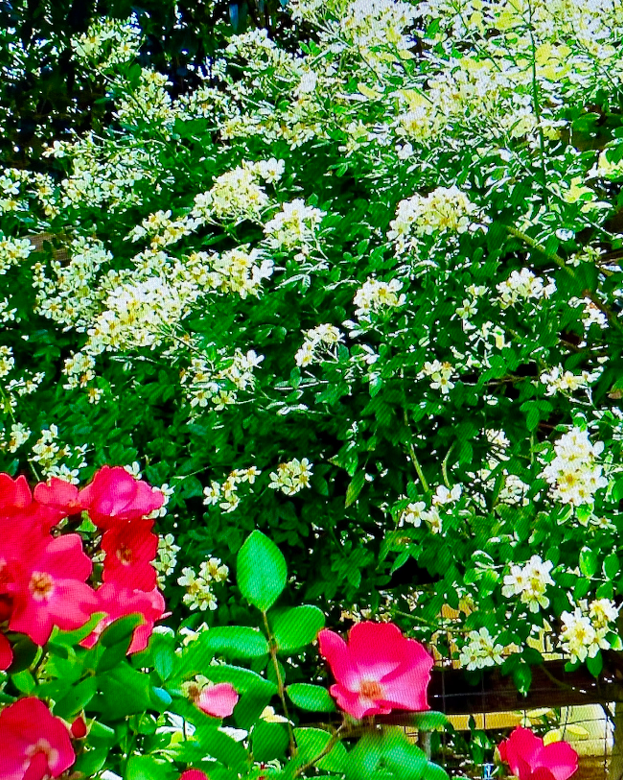August 4th, 2024Glen, about the house

Last issue l tempted you (photographically) to venture into the world of vertical gardens – a place of many advantages and few, if any, disadvantages.
For a start, all growth is up and outwards in two directions – and it’s usually along a wall or fence. lf they are kept neat and tidy, even an adult fruiting plum or peach tree, if managed correctly and regularly, shouldn’t take up any more than a metre in width if all growth is encouraged up and laterally along supporting walls or a trellis.
So, if you have a bare wall or ugly fence alongside a driveway, or one covered by a rampant climber threatening to overbalance and topple the fence, the obvious answer is go espalier.
Or even if you just want to grow a couple of fruit trees that without going espalier could mean losing most, if not all, of the kids’ play space, or the car wash space.
It is simply a method of gaining bigger, healthier crops, in far smaller places and providing heaps more space for entertainment.
It also has the branches equally open to sun, wind and water giving the whole crop an equal chance of ripening together, to say nothing of depriving lurking pests of shelter from predators.
Your choice of a suitable espalier plant should be simple. Everyone else is looking to find a well-rounded, multi-branched compact tree, leaving the lanky flat-sided specimens to the suckers.
But they are blissfully unaware that these make for the best start for the bottom branches of the espalier outline.
After removing any foliage or branches on the side chosen to face the wall or fence (obviously the least attractive side) and, leaving the best ones likely to be grown into a large fan shape, cut the rest back to about 10cm.
With ornamental trees and shrubs, espaliering is quite simple, all you need to do is select a plant that is already flat and one-sided to start with and you are halfway there.
lf not, the branches can be tied back in a fan shape against the wall or supported on horizontal wires but most plants will respond to merely having the front branches removed and the side growth encouraged to spread along the wall.
Although it may be necessary to keep pinching and snipping off wayward branches in the early stages of growth, that will probably be all that is necessary.
The espalier method of pruning allows you to grow a wide range of deciduous fruit trees, especially apples, plums and pears.
They respond quite well to this treatment, as do most shrubs. Roses, especially the ramblers with their flexible canes, like the one pictured above, Wedding Day, in my garden, are fantastic.
It is probably a marginal espalier as it was one of the struggling remnants of our century-old garden and popped up under my new post and rail garden fence along with that beautiful as-yet unnamed heritage rose, at its feet.
Got a gardening query? Email glenzgarden gmail.com










